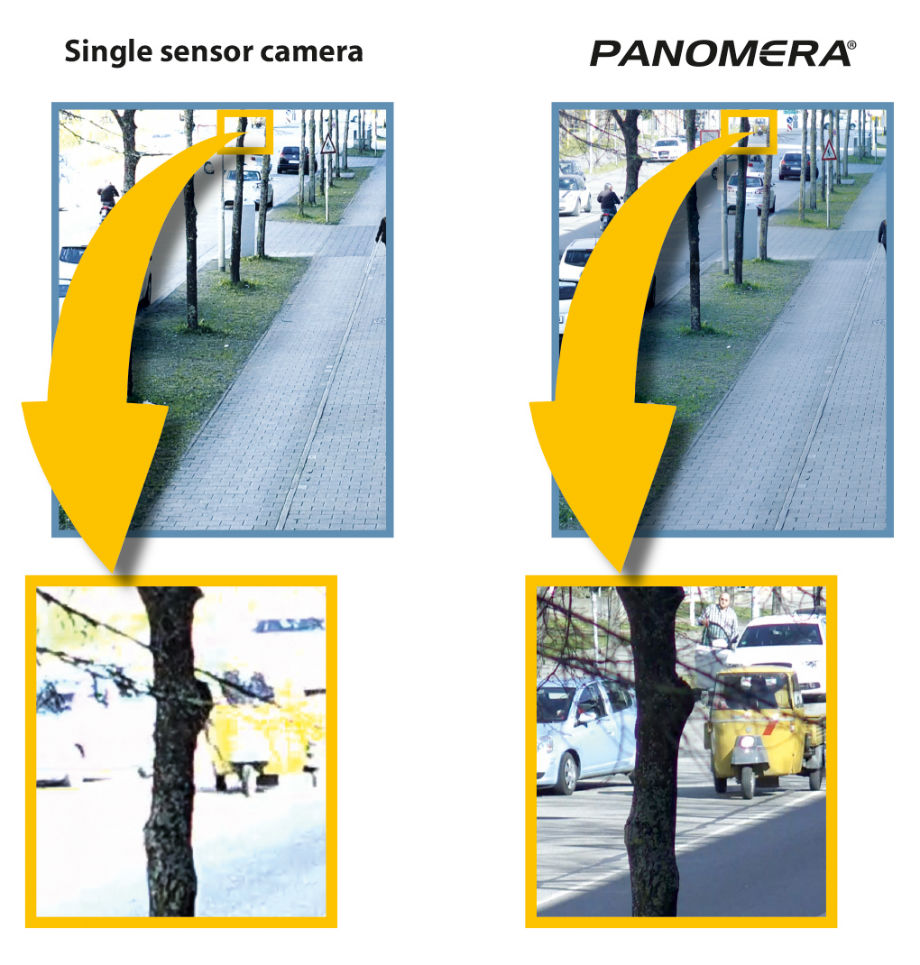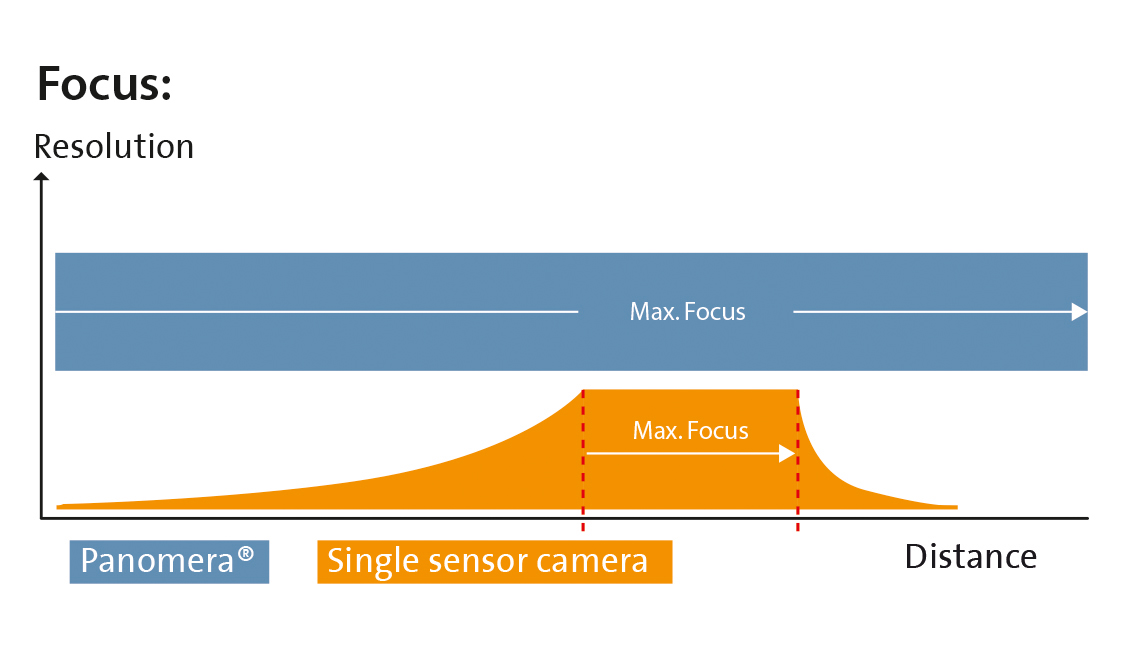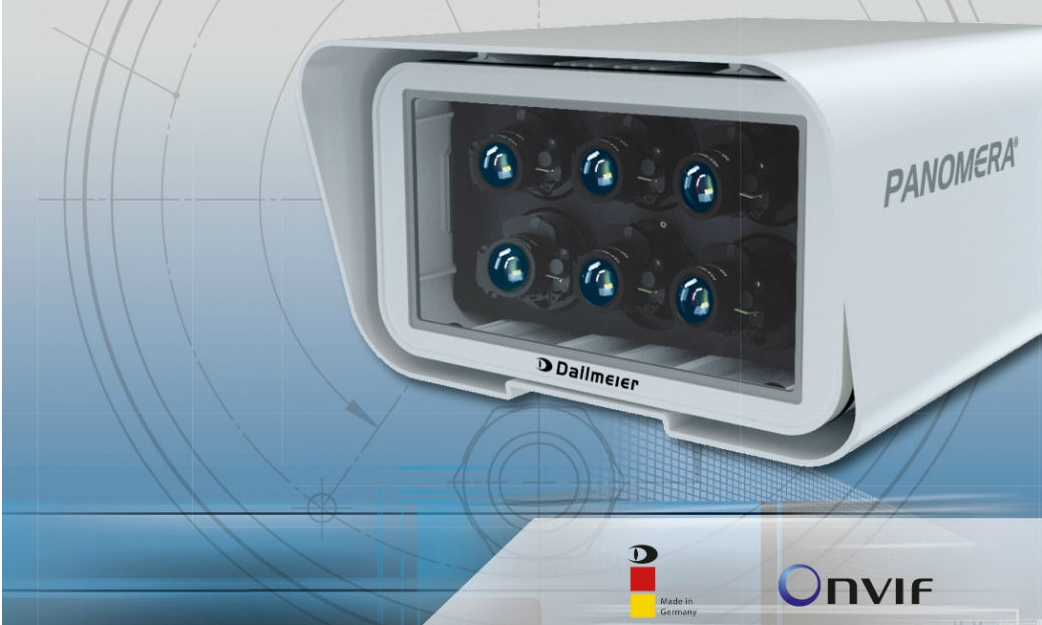The new S-Panomera® by Dallmeier was specially developed for commercial and industrial applications. Thus, the patented multifocal sensor technology has paved the way for a complete new solution approach in these markets.
“Video surveillance redefined” – a phrase coined by Dallmeier to describe their multifocal sensor technology. This new camera technology delivers a practicable and cost-efficient solution for many applications for which conventional engineering has failed to provide a solution. That is why in the past an estimated 30 to 40% of projects were never realised at all – a figure which represents a huge market for multifocal sensor technology.
We asked Dieter Dallmeier, founder and CEO of Dallmeier, a few more detailed questions, and we got some interesting answers.
Mr. Dallmeier, to begin with, can you briefly explain what multifocal sensor technology is?
As the name says, multifocal sensor technology is a camera technology with several sensors ("multisensor"), each operating with different focal lengths ("multifocal"), in contrast to single-sensor cameras. This makes it possible to monitor large areas and distances from a single location, and to do so in real time with uniform image resolution, high dynamic and consistent focal depth.
You talk about “redefining video surveillance”. What is so new about this approach?
Video surveillance cameras have been successfully used in security technology for more than 60 years. The technological progress made during this time was enormous. The technology has evolved from cameras using tubes to megapixel cameras. However, what did not develop further is the planning and perspective needed to solve problems.
Video cameras are undisputedly the best solution in security technology – for a picture says more than a thousand words. Without cameras, security technology would be blind in the truest sense of the word. Who is not familiar with the blurred, poor-resolution images from convenience stores, service stations, banks or railway stations that are repeatedly shown in the media and essentially useless? It is only fair to wonder if surveillance cameras are in fact worthwhile. Especially if “nothing is seen anyway” or the camera happens to be “looking the other way” at the decisive moment.
But the resolution of megapixel cameras is always going to be higher, isn’t it?
That is correct, but resolution is not everything, nor does it solve the problem. In addition, many megapixels on a single chip have unpleasant side-effects as far as things like light sensitivity, lens quality, image rate and bandwidth are concerned.
Focusing on resolution and defining it as pix/m makes it easier to plan. In other words, the main thing is not the resolution alone, but how many pixels per metre are obtained. For observation you need 65 pixels/m, 125 pixels/m to recognise known persons and 250 pixels/m for the identification of unknown individuals – no matter how far away a particular person may be. And that is precisely where our challenge lies and what ensures project planning reliability.
Merely indicating pix/m is not so very appealing. In contrast, speaking in terms of megapixels and ever more megapixels sounds better and sells better, even though it offers no true guarantee for a solution to the customer’s problem.
After all, what really interests the customer is not the number of megapixels, but rather whether suspects can be singled out and identified. This, of course, must be possible regardless of which area of the surveillance field that person is located in. Whereas megapixel cameras are surely still able to supply good results at close range, in the case of single-sensor cameras the number of pixels per metre decreases continuously as the distance from the camera position increases. At some point the images obtained are useless.

And the multifocal sensor technology offers a practicable solution for this?
It does indeed. We do not permit ourselves to be drawn into a race for more and more megapixels. Instead, we provide a new approach to the problems. If the customer tells us, for example, that a person should still be recognisable at 180 m, 125 pix/m are necessary for this. The customer does not care how many megapixels the camera actually has, as long as at least 125 pix/m are obtained at 180 m – or 120 m or 90 m, as the case may be. And this approach to a solution is precisely what we are following with our multifocal sensor technology. Contrary to single-sensor cameras, several lenses with different focal lengths are used. This patented technology makes it possible to monitor large areas and distances comprehensively, and to do so in real time with uniform image resolution and consistent focal depth.
This approach offers one more advantage: One single installation point is all you need. Not only does this mean that this solution is extremely cost-effective since huge savings can be achieved both in the number of required cameras and especially in the necessary infrastructure such as masts, cables, etc. It also means that solid solutions can be found with this technology for projects that could not previously be implemented at all.
The multifocal sensor technology here opens up a huge market for planners and builders. An estimated 30 to 40% of all projects have not been put into reality to date, since conventional technology did not offer any fitting solutions for comprehensive surveillance of large areas or distances, for instance due to the necessary number of cameras or the infrastructure. And this is precisely where the multifocal sensor technology comes in.
Cost effectiveness and uniform resolution are two solid arguments. But does this technology also have any advantages for the operator, namely the person working the equipment?
Contrary to PTZ cameras, Panomera® makes permanent recordings of the overall picture, namely in real time and with up to 30 fps, even if only a displayed cut-out is zoomed in live. The operator can then go about his or her duties at ease, without having to worry about missing significant occurrences due to zooming in on the wrong place at the crucial moment. With the multifocal sensor technology, everything that happens can also be analysed after the fact from the recordings. Nothing is lost. What’s more, due to its high sensitivity to light and the wide dynamic range, the camera also supplies high-quality imaging material under low-light conditions.
And especially in the area of image analysis, the multifocal sensor technology with its defined resolution in pix/m offers decisive advantages such as a larger range and fewer false alarms.

What about integration into other systems? Is the multifocal sensor technology compatible?
Yes. Panomera® complies with the Onvif norm and can be immediately integrated into common management systems. The multiuser capability allows any number of operators to access and analyse image material independently of each other.
This technology sounds complex and difficult. Is that true?
No! From the very beginning, we wanted the multifocal sensor technology to have the following features: Handling should be easier than in conventional cameras; results should always be superior to those of single-sensor cameras and the technology should be absolutely competitive in spite of the “Made in Germany” label. I think we have succeeded in this!
Are you concerned about whether this innovative technology could be imitated?
No, since our technologies are patented and we are pursuing a new strategy: Multifocal sensor technology is marketed as OEM, ODM and under the brand name Panomera®. This offers the best possible protection.
For further information please visit www.panomera.com



